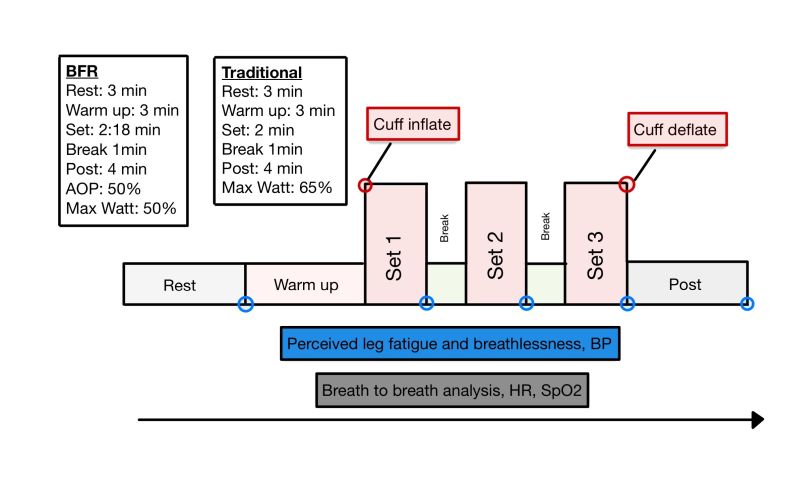Abstract
Introduction: Endurance training with blood flow restriction (BFR-EN) can improve muscular function and aerobic capacity. We investigated the acute cardiorespiratory response between BFR-EN and traditional interval endurance exercise (TRA-EN). We hypothesized that BFR-EN elicits lower minute ventilation (VE, primary endpoint) while exacerbating perceived leg exertion compared to work-matched TRA-EN.
Methods: We conducted a randomized crossover study. The protocol involved three cycling intervals interspersed by 1 min resting periods (Figure 1). Respiratory parameters were collected by breath-by-breath analysis. Heart rate (HR) and rate of perceived exertion (RPE, scale from 0 to 10) were assessed. BFR-EN intervals were work-matched to TRA-EN.
Results: Twenty-four healthy individuals (male/female: 15/9, mean (SD) age: 30.5±8.3 yrs) completed the study. TRA-EN elicited higher VE (2.4 L/min [0.98 to 3.82]), oxygen consumption (2.47 mL/kg/min [2.02. to 2.93]), carbon dioxide production (0.2 L/min [0.17 to 0.22]) and RPE Dyspnea (0.7 [0.55 to 0.85]) compared to BFR-EN. RPE Leg (-1.24 [-1.46 to -1.03]) was lower in TRA-EN compared to BFR-EN.
Conclusion: BFR-EN resulted in lower VE and perceived dyspnoea compared to TRA-EN. For people with lung disease, BFR-EN could provide endurance training with less respiratory effort while augmenting leg muscle effort.
